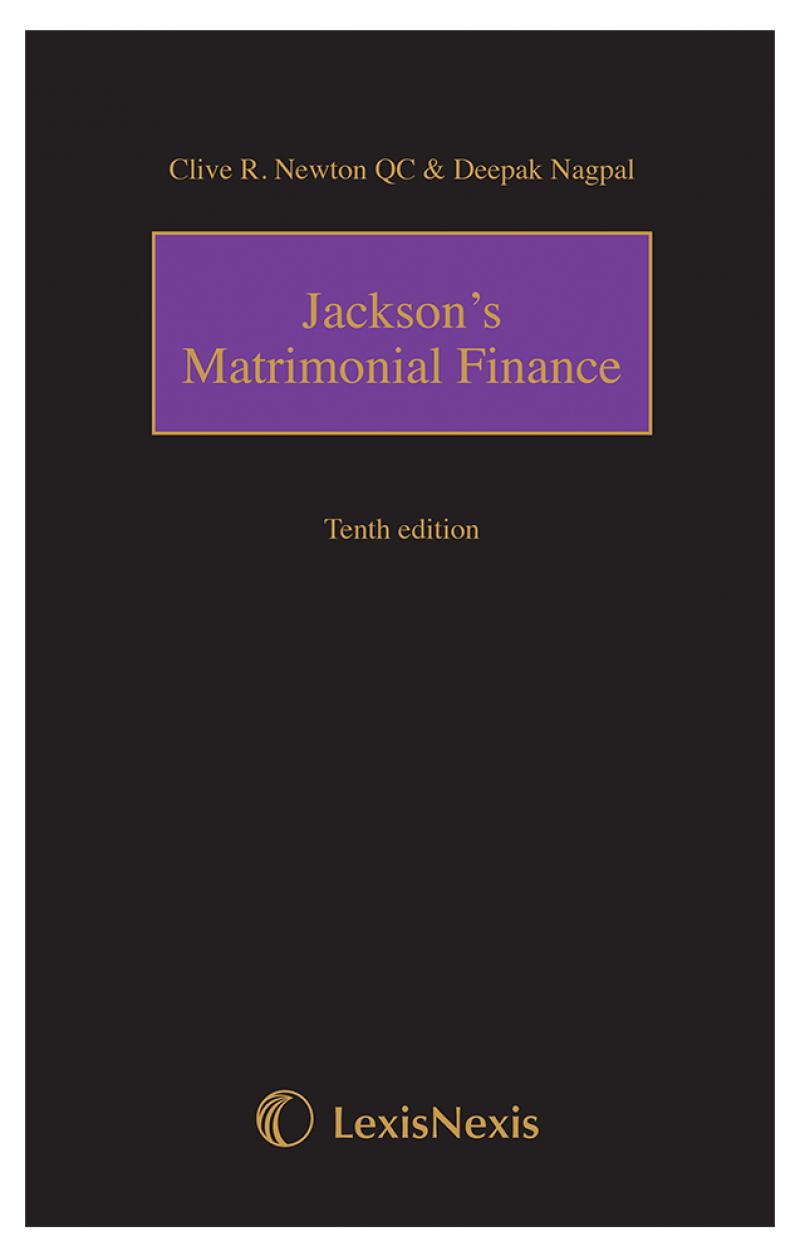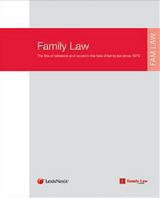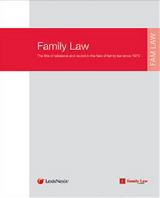- News & Comment
-
Online Shop
Online Services
Looseleafs
Law Reports
Books and eBooks
-
CPD & Events
Webinars
Events
- Authors
- About Family Law
- Contact












 24 FEB 2025
24 FEB 2025

 24 FEB 2025
24 FEB 2025

 24 FEB 2025
24 FEB 2025

 24 FEB 2025
24 FEB 2025

 24 FEB 2025
24 FEB 2025









‘[7] … The reason for [T’s] her removal [in August 2014] was that on that day T made allegations that “my dad sexually abuses me” to a mental health practitioner from the local CAMHS team who had been her key worker for some time. In the course of her discussion with the CAMHS worker on that day T gave more detail of her allegations both orally and in short written notes.The local authority’s pleaded threshold case was:
[8] As a result, T was removed from the family home. She underwent an Achieving Best Evidence ("ABE") interview on 9 September 2014. The interview was of significance in the sense that T again made allegations of sexual abuse against her father both orally and by writing notes on paper provided for her during the interview.
[9] Some months later, in March 2015, T made further allegations which were, after referral to the police, repeated to a police officer. She declined, however, to undergo a second ABE interview. On the next day, in conversation with her then social worker, T purported to retract, initially fully and then partially, her sexual abuse allegations.
[10] … These encounters had been limited to lifting of clothing and inappropriate touching, she asserted that on at least one occasion the father had attempted to penetrate her vagina with his penis.’
‘[13] … That it sought within the care proceedings. These were limited to the allegations made by T on 27 August and in the ABE interview on 9 September. They were limited in time to the period between the end of May and 25 August 2014 and set out five short specific descriptions of the type of abusive behaviour alleged. It was pleaded that the father had behaved in this way “twice a week most weeks” throughout the 12-week period. The Schedule also included criticism of the mother's response which was, it was said, to say to T “I don't believe you” and her failure to take protective measures prior to T’s removal from the family home.’Of this case McFarlane LJ summarised the judge’s findings – if they were that; he was not satisfied that they really were findings – as:
‘[27] Unfortunately, the Judge’s decision [is not recorded] on any of the five specific findings of sexually abusive behaviour alleged in the local authority Schedule save that, at paragraph 71, the Judge stated “I also find that the description T gives of her father attempting to penetrate her is wholly believable”.’
‘[24] … Given the string of requests over the course of over six months that had been made by the parties and by the Court of Appeal for the Judge's detailed response, the failure to distribute the approved version, or even alert those concerned to the fact that it had been sent to the transcribers, is surprising.’
‘[30] Two notices of appeal issued on behalf of the father and mother respectively were issued in August 2017. Although this was many months after the making of the care order and the delivery of the oral judgment in January 2017, I accept that the delay arose because the parties were waiting for the Judge to engage in the process of clarification that she had directed should take place and, thereafter, the production of a final version of the judgment. There were also considerable difficulties in securing legal aid, caused at least in part by the absence of a judgment. At various stages the Judge's clerk had given the parties some hope that a final judgment might be produced. The notices of appeal were only issued once the parties were forced to conclude that a final version of the judgment was unlikely to be forthcoming.’McFarlane LJ’s summary of the basis for the appeal was that the judgment failed to identify what – if any – findings of fact the judge made ([28]). All parties agreed that the appeal should be allowed. This state of affairs, generally, said the judge, was as regrettable as it was untenable ([33]).
‘(2) The appellant must file the appellant’s notice at the appeal court within—
(a) such period as may be directed by the lower court (which may be longer or shorter than the period referred to in sub-paragraph (b)); or
(b) where the court makes no such direction,… 21 days after the date of the decision of the lower court which the appellant wishes to appeal.’
‘[45] … The benefit of issuing a notice of appeal, apart from the obvious avoidance of further delay, is that the Court of Appeal may itself directly engage with the Judge in the hope of finalising any further outstanding matters.’Advocates should therefore always take a full note, ‘[43] … so that, if it is needed, that note can be provided promptly to the Court of Appeal when a notice of appeal is filed;’ and it is plainly important for advice of clients and to obtain extensions of any legal aid certificate. That said ‘[44] … it must be reasonable for the party to await the conclusion of the process of clarification before being obliged to issue a notice of appeal’ subject to what is said at the start of this section.
Transcripts may not be available in the 21 days; so that though a transcript is preferable from the court’s point of view, even then – as in pre-transcript days:
‘[43] … the Lord or Lady Justices of Appeal undertaking evaluation of permissions to appeal in family cases are now more willing to accept a note of judgment (if possible agreed) taken by a lawyer or lawyers present in court in order to determine an application for permission to appeal rather than await delivery of an approved transcript of the judgment.’
‘[45] After that time, the notice of appeal, if an appeal is to be pursued, should be issued. The issue of a notice of appeal does not, of itself, prevent the process of clarification continuing if it has not otherwise been completed. Indeed, in some case the Court of Appeal at the final appeal hearing may itself send the case back to the Judge for clarification.’The approach of filing a notice of appeal sooner rather than later, and what McFarlane LJ says in the last citation, is consonant with what was actually said by the earlier Court of Appeal in English v Emery Reimbold & Strick Ltd:
‘[25] Accordingly, we recommend the following course. If an application for permission to appeal on the ground of lack of reasons is made to the trial judge, the judge should consider whether his judgment is defective for lack of reasons,… If he concludes that it is, he should set out to remedy the defect by the provision of additional reasons refusing permission to appeal on the basis that he has adopted that course. If he concludes that he has given adequate reasons, he will no doubt refuse permission to appeal. If an application for permission to appeal on the ground of lack of reasons is made to the appellate court and it appears to the appellate court that the application is well founded, it should consider adjourning the application and remitting the case to the trial judge with an invitation to provide additional reasons for his decision or, where appropriate, his reasons for a specific finding or findings. Where the appellate court is in doubt as to whether the reasons are adequate, it may be appropriate to direct that the application be adjourned to an oral hearing, on notice to the respondent.’





Leave a commentOrder by
Newest on top Oldest on top